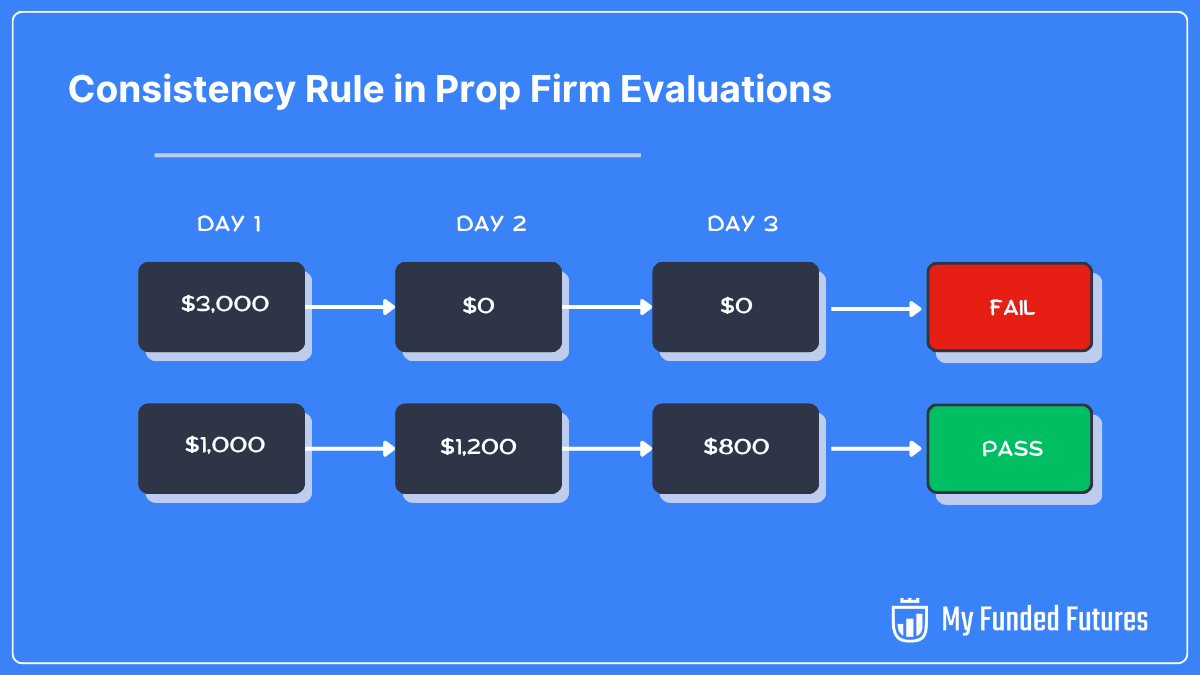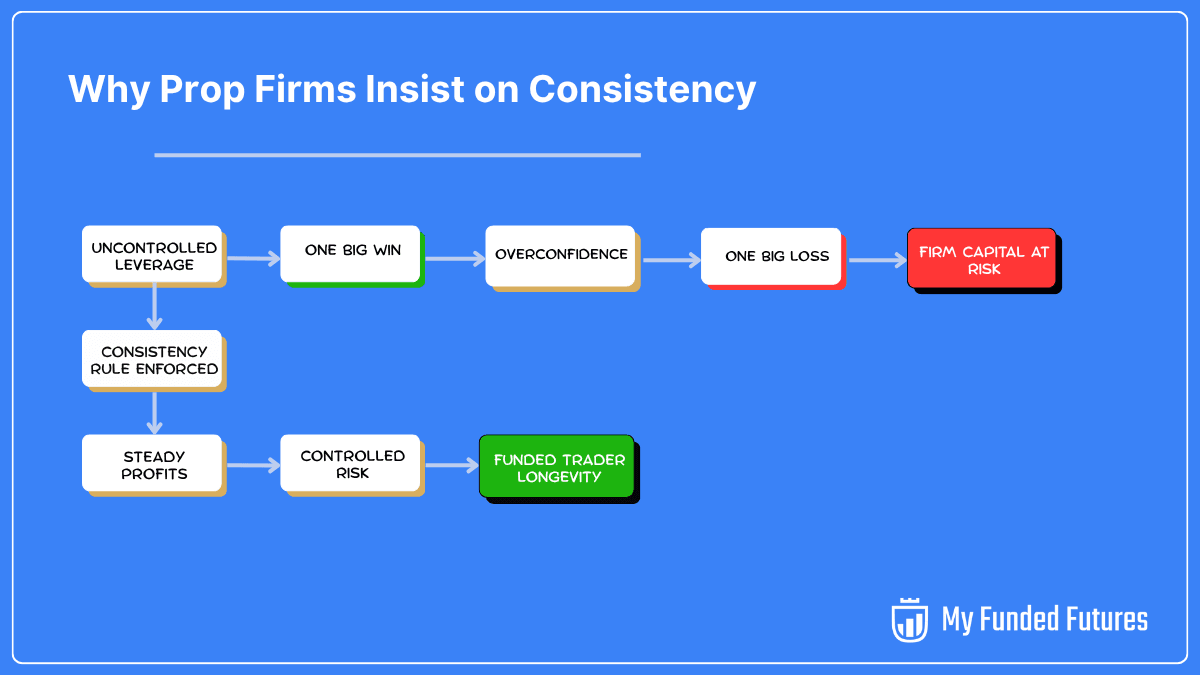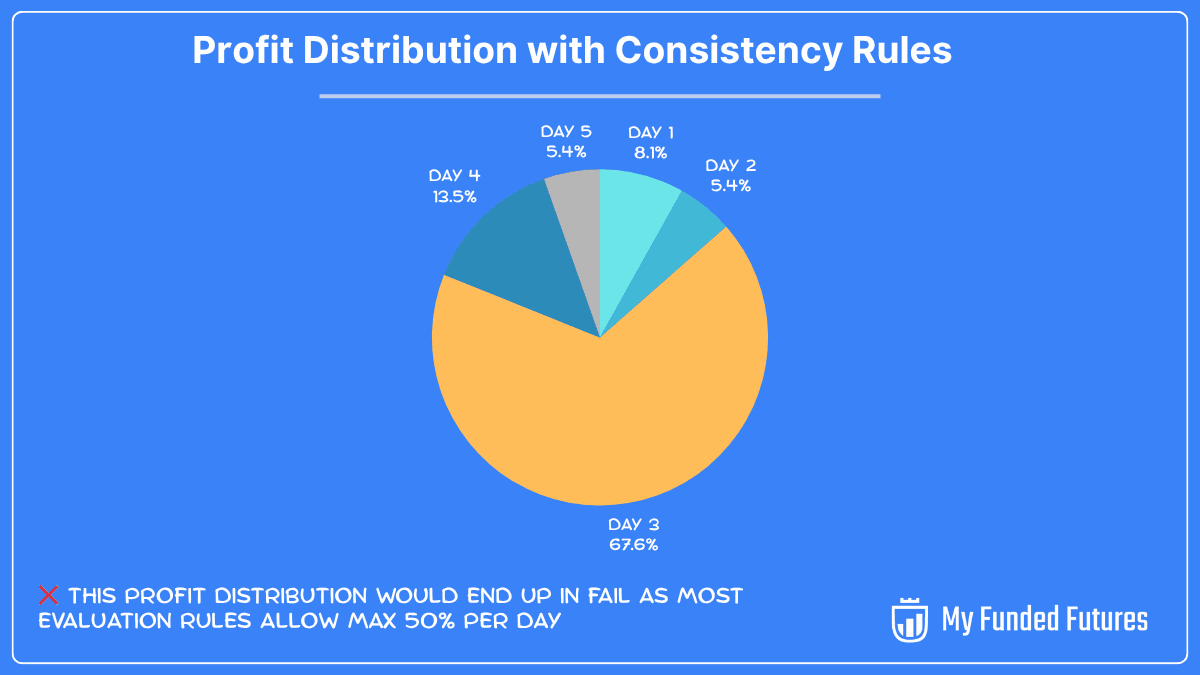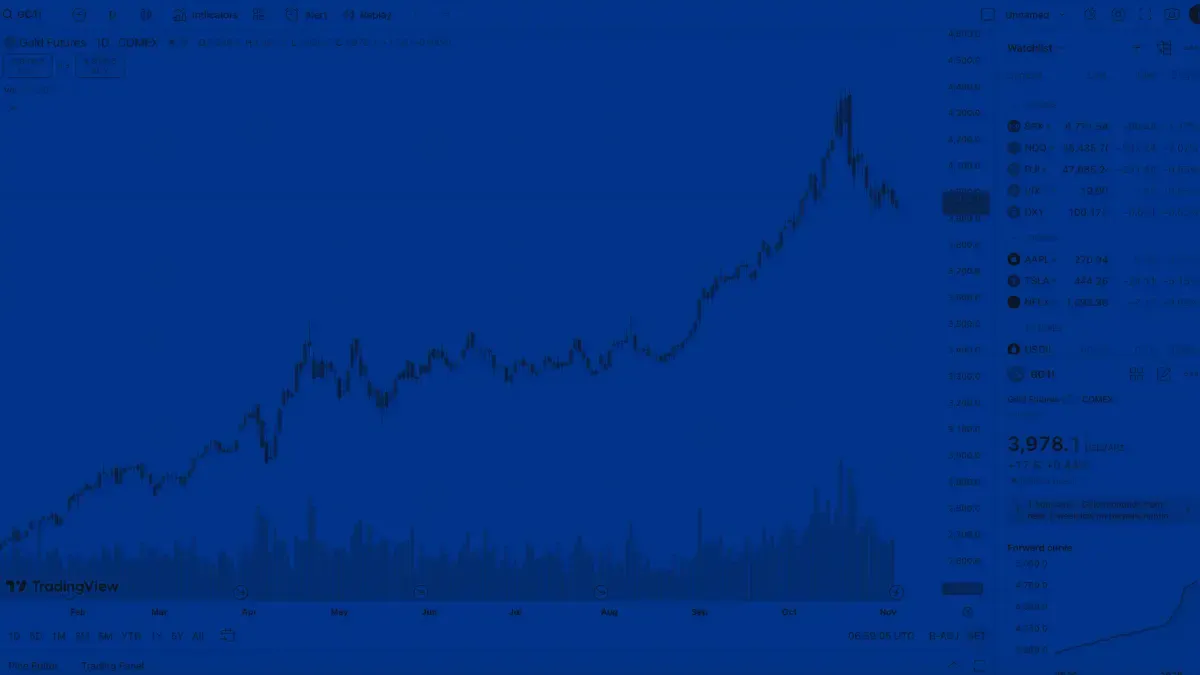You crushed your evaluation with $4,000 in profits, well above your target. You sit back, confident you proved yourself. Then you realize most of that came from one strong trading day. What does that mean for your funding review?
Prop firms pay attention to that detail because they’re looking for more than a big win. They want to see that you can manage risk, trade different market conditions, and produce steady results. They’re looking for the traits that define professional traders managing real capital.
That’s where consistency rules come in. They aren’t in place to trip you up; they exist to prove you have discipline, and that your strategy works over time and under different market conditions. At MyFundedFutures and other prop firms, these rules separate professional traders from gamblers who happened to catch one lucky break.

Let's break down what the consistency rule means, why futures and forex prop firms use it, and how it works at MyFundedFutures.
What Is the Consistency Rule?
The consistency rule is a requirement that ensures traders generate profits through steady, repeatable performance rather than relying on a single outsized trade. Different prop firms structure this requirement in different ways, but the underlying principle remains the same. You need to show you can make money more than once.
Specific rules vary between prop firms, but they typically require that profits be spread over a minimum number of days or limit how much profit can come from your best single day. A common version states that no single trading day can account for more than 40% or 50% of your cumulative gains during the evaluation or payout cycle.
For instance, say you're trading the E-mini S&P 500 during your evaluation with a $3,000 profit target. On day one, you catch a momentum move and close up $2,500. Over two more days you add $500, hitting your target. You submit for review, but the firm rejects you because 83% of your profit came from one day.
Why Prop Firms Enforce Consistency Rules
Prop firms fund accounts with real capital. They need traders who manage risk systematically and avoid the emotional traps that lead to blowups.

A trader who spreads profits over multiple days proves they aren't overleveraging on a single idea and can execute with discipline. Traders who pass evaluations relying on one huge win often struggle once funded. The habits that gave them one big win will eventually give them one catastrophic loser.
The consistency rule filters out these traders before they touch firm capital and forces you to build habits that professional futures and forex traders rely on.
You May Be Interested: What Is MyFundedFutures Core Account and Is It The Right Plan For You?
How Consistency Rules Differ Across Prop Firms
Consistency requirements vary across firms based on their evaluation structure and risk standards.
Some firms require a minimum number of active trading days before review, typically five or more. Others limit the percentage of profits from your single best trading day, commonly 40% to 50% of total gains. Some enforce requirements around positive trading days or total contracts traded.

While the overall concept is similar across futures and forex prop firms, the specific percentages and day requirements vary by firm and market.
MyFundedFutures uses different rules depending on your plan. The Starter Plan applies a 40% rule only to the funded stage. No single day's profit can exceed 40% of your total simulated profits during a payout cycle. If your best day exceeds this, withdrawals pause until additional trading brings that percentage under the threshold. If you make $10,000 total and your best day was $4,500 (45%). Your account stays active, but you need to add $2,000 more to bring your total to $12,000, making that $4,500 day represent 37.5% and restoring payout eligibility.
The Core, Scale, and Pro Plans use a 50% rule only during evaluation. No single day should exceed 50% of your total evaluation profits. If you hit your $3,000 target and one day accounts for more than $1,500, you simply trade additional days until the requirement is met. Exceeding 50% does not breach your account. Once funded, the consistency rule is removed entirely.
You can use a consistency calculator to see more clearly how it works with different parameters.
How to Stay Compliant
Meeting the consistency rule requires intentional trading. You cannot rely on luck or one perfect setup. You need to build habits that generate steady results.
Trade smaller position sizes more often. If you normally risk $500 per trade, cut that in half and take twice as many setups. This spreads profit across more days.
Stick to a clear trading plan. Define your entries, exits, and risk parameters before you place a trade. When you follow a system, your results become more predictable. Consistency rules reward predictability.
Keep your risk per trade stable. If you risk 1% on one trade and 5% on another, single big wins will dominate your totals. Risk the same amount on every trade.
Track your performance daily. Monitor how much of your total profit comes from your best days. If one day creeps above 40% or 50%, add more trading sessions before requesting a payout or submitting for review.
Why It Benefits Traders
The consistency rule is a training tool that builds the discipline required to survive in leveraged markets. Futures and forex magnify mistakes fast. Traders who can't manage risk consistently blow up.
By requiring steady profits, the rule teaches you to trade within your limits and shows you when your position sizing is too aggressive or when you're relying too heavily on a single setup. These lessons hurt less during an evaluation than when trading a funded account.
Anyone can get lucky once. Winning consistently requires skill, patience, and the ability to execute a plan under pressure. If you can meet the consistency rule, you've proven you have those traits.
Related: How Viable is Instant Funding with Prop FIrms for Futures Traders?
Conclusion
The consistency rule exists because prop firms need traders who perform steadily, not just get lucky once. MyFundedFutures uses these rules to ensure traders develop the discipline required for long-term success.
Trade smaller, trade more often, follow a plan, and track your results. The consistency rule is a filter that separates professionals from gamblers and prepares you for the realities of live funded trading.
This material is provided for educational purposes only and should not be relied upon as trading, investment, tax, or legal advice. All participation in MyFundedFutures (MFFU) programs is conducted in a simulated environment only; no actual futures trading takes place. Performance in simulated accounts is not indicative of future results, and there is no guarantee of profits or success. Fewer than 1% of participants progress to a live-capital stage with an affiliated proprietary trading firm. Participation is at all times subject to the Simulated Trader Agreement and program rules.
Rate this article
Related Posts
Read our most popular posts
5 Best Prop Firms With TradingView Integration
TradingView's powerful charting tools and real-time data make it a favorite among futures traders, but not every prop firm lets you trade directly from your charts. We've identified five firms that offer true TradingView integration, making it easy to analyze, execute, and scale without switching platforms.
What Is MyFundedFutures Scale Account and Is It The Right Plan For You?
The MyFundedFutures Scale Account is a middle-tier evaluation plan that balances affordability with growth potential. The scale plan offers weekly payout opportunities with increasing withdrawal limits, no daily loss cap, and a clear path to live funding after just five consecutive payouts.
5 Best Prop Firms With NinjaTrader Integration
NinjaTrader's advanced charting and precision execution tools make it a top choice for active futures traders, but not every prop firm integrates it smoothly. We'll highlight five firms that support true NinjaTrader compatibility, how their setups compare, and which one gives you the most stable, consistent path from evaluation to funded account.


